The Broke Backpacker is supported by you. Clicking through our links may earn us a small affiliate commission, and that's what allows us to keep producing free content 🙂 Learn more.
Death Valley National Park is a beast. Over 3,000,000 acres of desert, canyons, and salt flats that all add up to one of the starkest, most inhospitable, and stunning places to visit in the U.S.
Its namesake valley is the hottest, driest place in North America — and the lowest, too, with Badwater Basin sitting at 282 feet below sea level.
But this extreme environment doesn’t just have to be glimpsed from a car window, you can explore it all on foot! Marvel at salt flats, adventure through narrow canyons, and trek to the top of singing sand dunes.
But if you’re sitting there wondering how it’s even safe to go hiking in Death Valley National Park — or you have no idea where to start — we’re here to help.
This guide will give you all the information you need for an incredible time in this arid wonderland: safety tips, all the best hikes in Death Valley, and how to figure out where to stay.
Bring on the heat!

Do You Want to Travel FOREVER??
Pop your email in below to get a FREE copy of ‘How to Travel the World on $10 a Day!’.
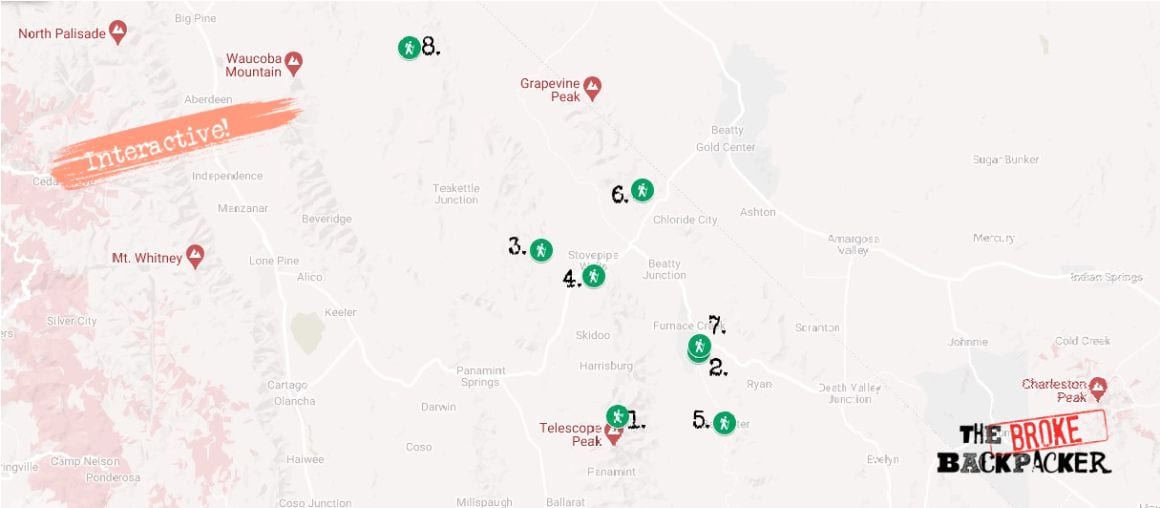
The Broke Backpacker is supported by you. Clicking through our links may earn us a small affiliate commission, and that's what allows us to keep producing free content 🙂 Learn more.
Death Valley National Park is situated in eastern California, with a tiny bit jutting out into Nevada. With Death Valley as its centerpiece, this vast national park is a must on any West Coast road trip!
It’s a huge area that receives just two inches of rainfall on average per year. It’s very dry and it’s really damn hot.
Don’t come here expecting any leafy trails or glades to saunter through. Hiking in Death Valley is all about rocky routes, jagged peaks, and weaving your way through narrow canyons.
All the heat and no rain naturally translates into a whole lot of sunshine. And that means you have to think wisely about what you pack into your bag (more on that in our What to Bring on Your Hike section).
Much of the time, you’ll be getting to grips with an arid landscape straight out of a sci-fi movie, checking out cool rock formations, and climbing up to peaks for views out over the badlands.
Variation isn’t what makes this place attractive. In fact, it’s more the lack of variation that makes it a sight to behold — the hostile environment, the rock-strewn land and twisting canyons, and the endless dusty vistas.
Our #1 tip is to avoid summer at all costs. Come late fall through spring, when its most popular campgrounds open.
Now, before we show you the goodies, let’s talk safety for a minute.
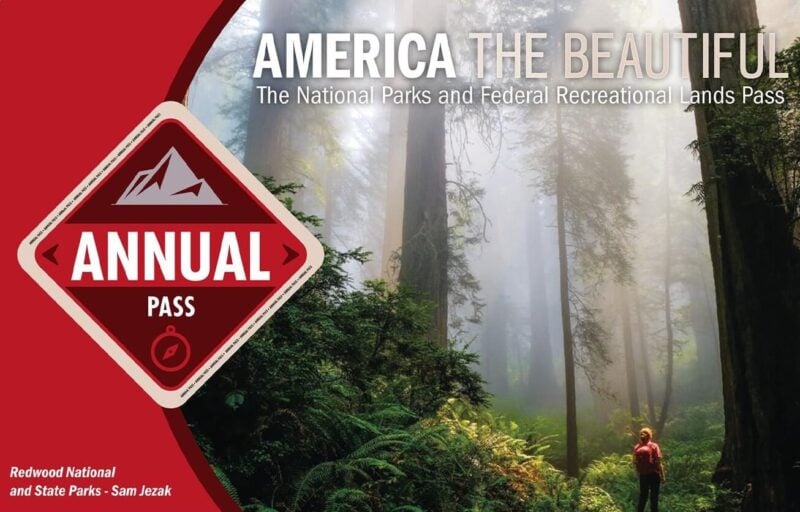
The USA is blisteringly beautiful. It’s also blisteringly expensive! Visiting two national parks in day can run you $70+ in entry fees.
Orrrr… you kick those entry fees to the curb, buy an annual ‘America the Beautiful Pass’ for $79.99, and get unlimited access to ALL 2000+ federally managed sites in the States totally FREE!
You do the math. 😉
Buy the Pass!Death Valley National Park Trail Safety
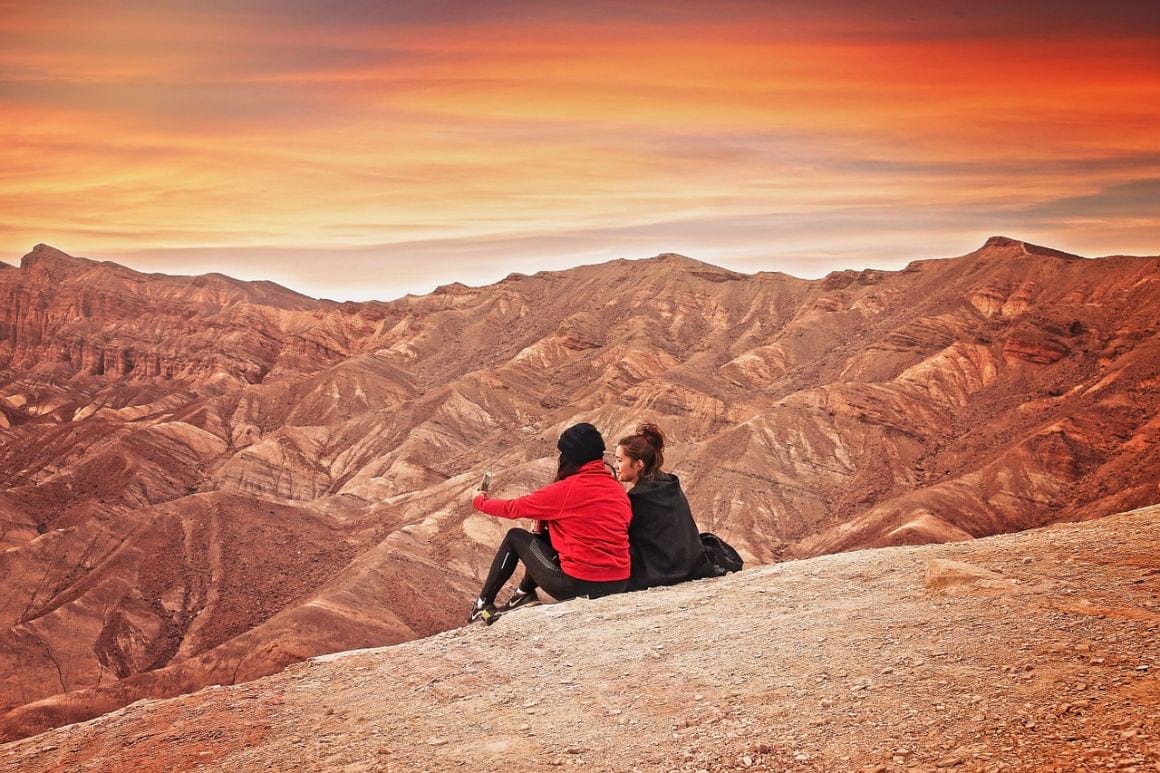
Hiking in Death Valley may sound a little scary (well, the name doesn’t help either), but this is a place you should visit at least once in your life. Hikes here will take you out into remote regions, to the tops of dunes, and through epic canyon corridors.
But even though it is a beautiful place, it is also a place of wild extremes. In fact, almost all of the park has little to no human intervention. It’s not like you’re on your own here, but you should definitely come prepared.
During the daytime, temperatures can hit 57 degrees Celsius in the summer months, with nighttime temperatures dropping to dangerous levels in the winter.
Let’s pin down the most important safety tips to remember when hiking in Death Valley:
- Watch out for the heat – Yap, we’ve got to reiterate this. Planning when to visit is key, as some of the hikes are impossible during the summer. And do some water planning: certain drinking points and springs are not active year-round, so you should check beforehand with the ranger.
- Listen to your body – If you feel sick, have a headache, or are dizzy, you need to get out of the direct sunlight and rehydrate. Get some sugar in your body and wet your clothes to counter your body temperature.
- Be prepared – Always stick to the paths and carry extra drinking water just in case. Pack a GPS device & a map, because not every trail is well marked, and it can be easy to lose your way.
- Know what to expect – Spend some time going over what a hike entails. You might need special equipment for specific sections, and you don’t wanna go unprepared. Hike early in the day to avoid crowds and avoid having to rush back.
- Be aware of wildlife – It might seem like a barren landscape, but Death Valley is home to scorpions, black widow spiders, and rattlesnakes. Before you sit down or place your hands anywhere, make sure you check first.
- Keep away from mines – Don’t try and enter any of the old mine tunnels or shafts located around the park. They might seem intriguing, but could be unstable.
- Always let somebody know your plans – Even if you’re hiking in a group, make sure you let somebody know what your itinerary is, where you’re heading, and what time you plan to return.
- Obtain a backcountry permit – Those of you heading out in the backcountry will need to get a free backcountry permit, which includes information in case search and rescue is needed. You can do it online or at a visitor center.
- Get your ass insured – Travel insurance equals peace of mind — it’ll cover your ass in case something bad happens. And as much as we don’t want anything bad to happen, you’re no stranger to the game of life at this point.
ALWAYS sort out your backpacker insurance before your trip. There’s plenty to choose from in that department, but a good place to start is Safety Wing.
They offer month-to-month payments, no lock-in contracts, and require absolutely no itineraries: that’s the exact kind of insurance long-term travellers and digital nomads need.
SafetyWing is cheap, easy, and admin-free: just sign up lickety-split so you can get back to it!
Click the button below to learn more about SafetyWing’s setup or read our insider review for the full tasty scoop.
Now that you’re suitably prepared for what to expect at this monster park, it’s time for us to share with you the best hikes in Death Valley.
We’ve split them into different categories to make it easier for you to choose: from popular, easy hikes to extremely challenging trails, there’s something for every type of hiker here.
- Wildrose Peak Trail – The Best Day Hike in Death Valley National Park
- Desolation Canyon Trail – Most Beautiful Hike in Death Valley National Park
- Cottonwood-Marble Canyon Loop – The Best Multi-Day Hike in Death Valley National Park
- Mosaic Canyon Trail – Must-Visit Hike in Death Valley National Park
- Badwater Basin Salt Flats Trail – A Fun, Easy Hike in Death Valley National Park
- Corkscrew Peak – The Toughest Trek in Death Valley National Park
- Gower Gulch Loop Trail – Best Hike for Views in Death Valley National Park
- Eureka Dunes – Best Off the Beaten Path Trek in Death Valley National Park
Join our entrepreneurship retreat in Bali!

Ahoy friends, Will here! Introducing a very special project that involves YOU – An 8-day immersive experience in Bali, where I have been living for 7 years now.
If you’re passionate about freedom and designing your dream life, this is your chance to join like-minded folk on the same path and learn from my own wins, losses and lessons over my fifteen years of entrepreneurship, whilst soaking in the best of beautiful Bali.
Expect daily workshops, recharge practices, intention setting and fire ceremonies and perhaps a cheeky game of pool against myself, the one and only undefeated pool legend. All while experiencing the island’s best-kept secrets ?
1. Wildrose Peak Trail – The Best Day Hike in Death Valley National Park
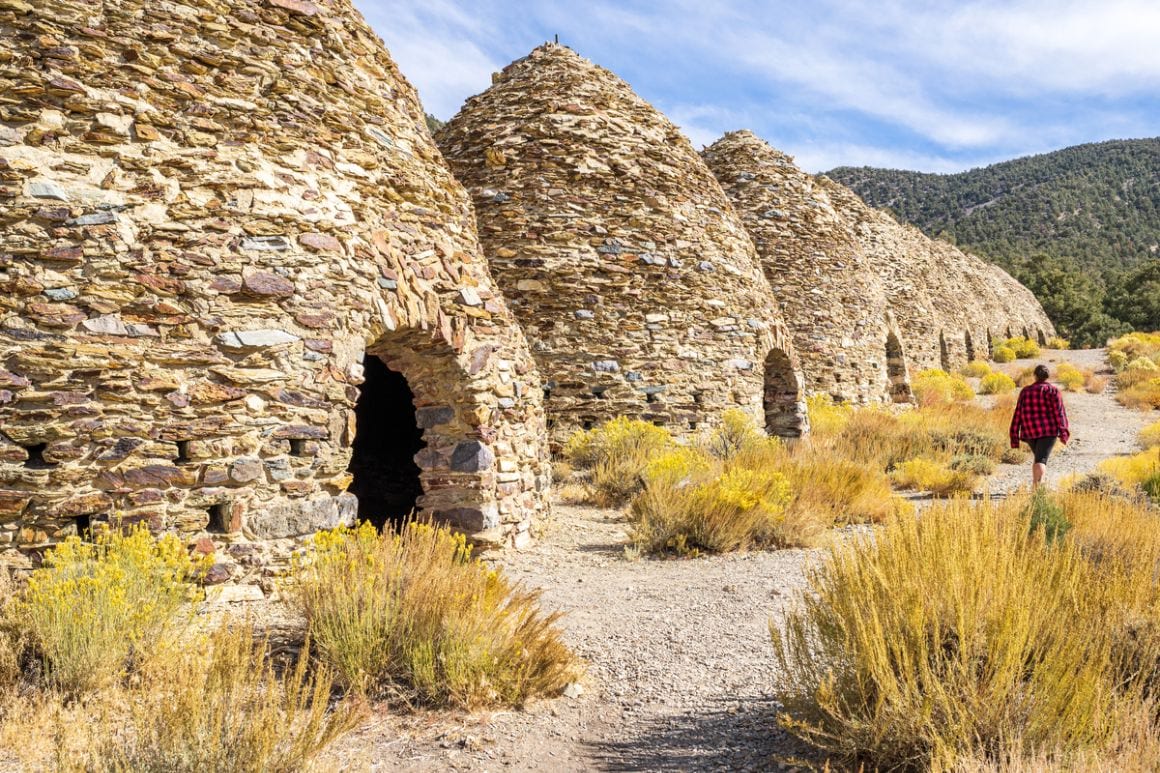
This day hike in Death Valley seemed like a good place to start this off. You’ll be taking in great views, working up a little bit of a sweat, and soaking up some history on the way — a great all-rounder of a trail.
It all kicks off at the Wildrose Charcoal Kilns. These historic beehive-shaped structures were once used for mining operations in the area; ten of them still stand today (and in great condition, too).
From here, you’ll be hiking along a paved path with views out across the wide-reaching desert, as you gradually make your gentle ascent.
You’ll then pass through a Pinyon Pine forest as you head up to the ridgeline. After that, the trail continues onwards and after just half a mile you’ll make it to the summit.
At the peak of Wildrose Mountain, you’ll be rewarded with unobstructed 360-degree views of the Mojave Desert. On a clear day, you can even see the Sierra Nevada mountains in the distance!
Though not the most strenuous hike in Death Valley, it’s still fairly hard work (especially towards the end). Bring plenty of water.
- Length: 13.5km
- Duration: 6 hours
- Difficulty: Moderate
- Trailhead: Wildrose Charcoal Kilns (36°14’49.6″N 117°04’33.0″W)
2. Desolation Canyon Trail – Most Beautiful Hike in Death Valley National Park
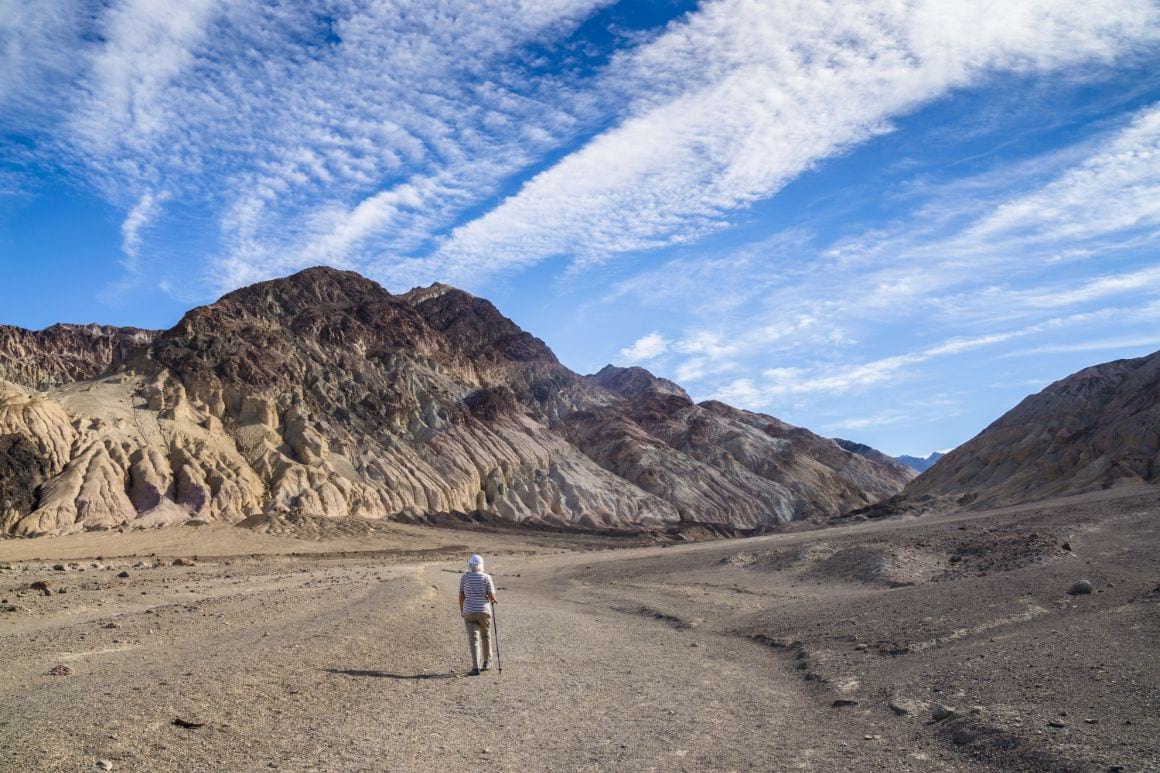
We know the name is not particularly appealing, but trust us on this one: the Desolation Canyon Trail has got to be one of the coolest hikes in Death Valley.
Despite its name, this spot is actually carpeted in wildflowers at the right time of year. The trail can be a bit strenuous at points, with a few rock scrambles to tackle, but nothing too difficult — especially for a fit, experienced hiker.
Desolation Canyon Trail is a fun out-and-back hiking route, taking you through a canyon and into the Black Mountains. You’ll notice the walls starting to rise around, growing into a sort of wine glass shape.
The canyon itself is ripe for adventure. You have a few little offshoot canyons to explore if you’ve got time, but after about a mile on the main route, you’ll be facing two rock scrambles (one eight-foot, the other six).
After that, you’ll be enveloped in the colorful canyon walls in a den of ancient geological rock formations. Then it’s up to the ridgeline for a grand view of Death Valley.
- Length: 5.8 km
- Duration: 2.5 hours
- Difficulty: Moderate
- Trailhead: Desolation Canyon Road (36°23’46.6″N 116°50’25.1″W)

Wanna know how to pack like a pro? Well for a start you need the right gear….
These are packing cubes for the globetrotters and compression sacks for the real adventurers – these babies are a traveller’s best kept secret. They organise yo’ packing and minimise volume too so you can pack MORE.
Or, y’know… you can stick to just chucking it all in your backpack…
Get Yours Here Read Our Review3. Cottonwood-Marble Canyon Loop – The Best Multi-Day Hike in Death Valley National Park
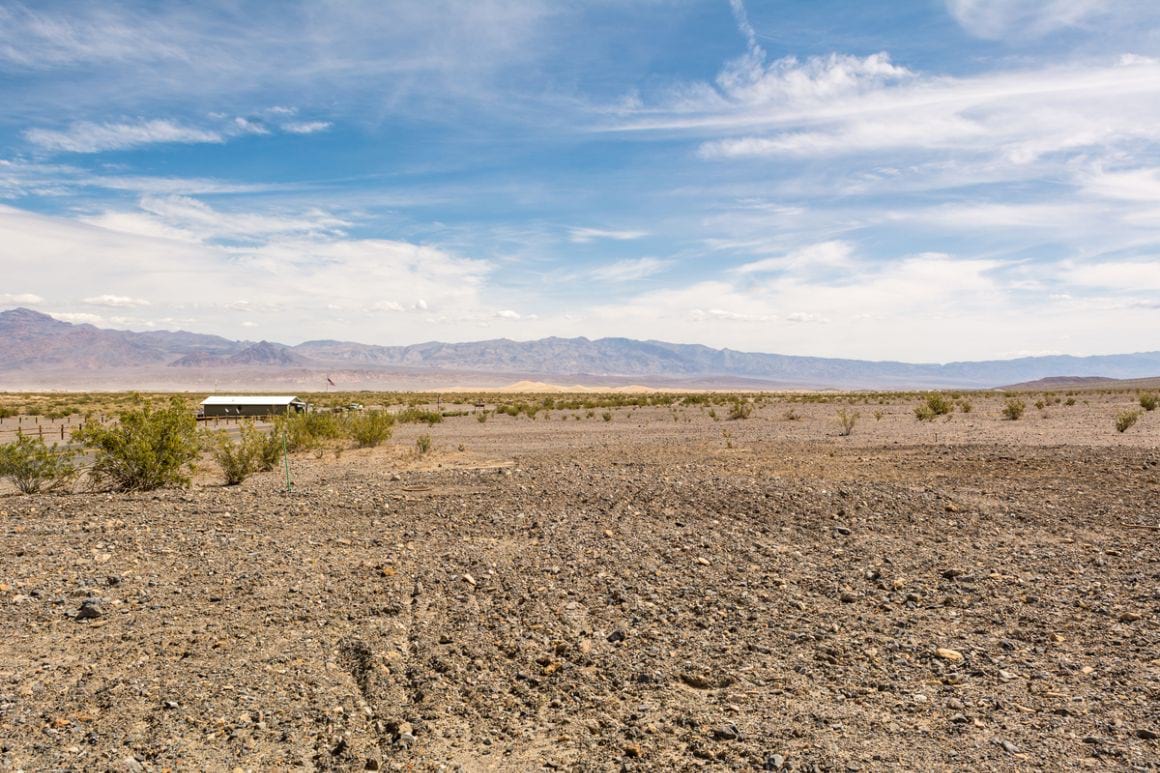
If you’re up for something a little challenging, take notes of the Cottonwood-Marble Canyon Loop. This desert trail runs for around 45 kilometers, taking in some real hidden gems of Death Valley National Park.
It’s an awesome hike, making your way through rocky canyons, past fields of wildflowers, and lapping up some expansive views. If you’re lucky enough, you might even spot some wild horsies!
This is the sort of Death Valley hiking experience for those looking for solitude. You’re not likely to run into many other people while you’re on the trail.
Wondering where you’ll be staying for the two or three nights this hike could take you? You’re allowed to camp along the route. There are three water sources available, so when you come across them, don’t just pass them by.
Because of the desert heat, this hike is best done in the winter months — or late fall/early spring. There’s not much shade along the trail at all, so adequate sun protection is definitely a must. Hydration is key!
- Length: 42-45 km
- Duration: 2-3 Days
- Difficulty: Hard
- Trailhead: Stovepipe Wells Campground (36°36’28.2″N 117°08’52.5″W)
4. Mosaic Canyon Trail – Must-Visit Hike in Death Valley National Park
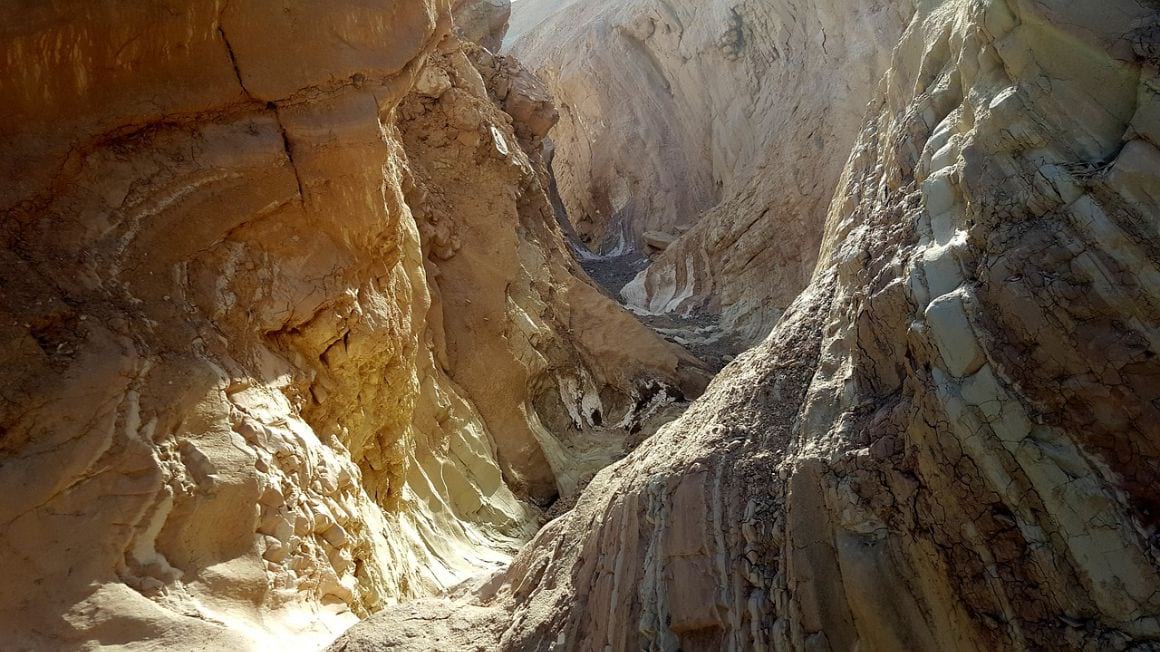
If you have time for literally no other hike in Death Valley, then we’d recommend this one. It’s popular, but if you can stand the crowds (and we’d hardly call them that), you’ll be treated to some quintessential Death Valley scenery and some pretty awesome geology.
From the trailhead, you start walking into the canyon, and the walls around you become narrower and narrower. They’re smooth and rounded, though.
Further ahead, the Mosaic Canyon Breccia appears. And what’s that, you may ask? Well, different colored pigments and fragments in the rock face give the impression of mosaic tiles and inspired the name of this canyon.
Continuing onwards, you’ll find huge boulders blocking your path. For those who are able, you can crawl between them and explore further. Here you’ll find narrow slots, beautifully carved by time and nature over thousands of years.
Beyond, there’s a more informal route, so if you’re looking for more adventure, keep going! The narrows here begin to get really narrow and much more challenging.
For casual or inexperienced hikers, we’d recommend stopping at those boulders and making your way back. Canyoneers, however, will have a ball if they carry on.
- Length: 5.6 km
- Duration: 2 hours
- Difficulty: Moderate
- Trailhead: Mosaic Canyon Road (36° 34? 18.9?N 117° 08? 39.6?W)
5. Badwater Basin Salt Flats Trail – A Fun, Easy Hike in Death Valley National Park
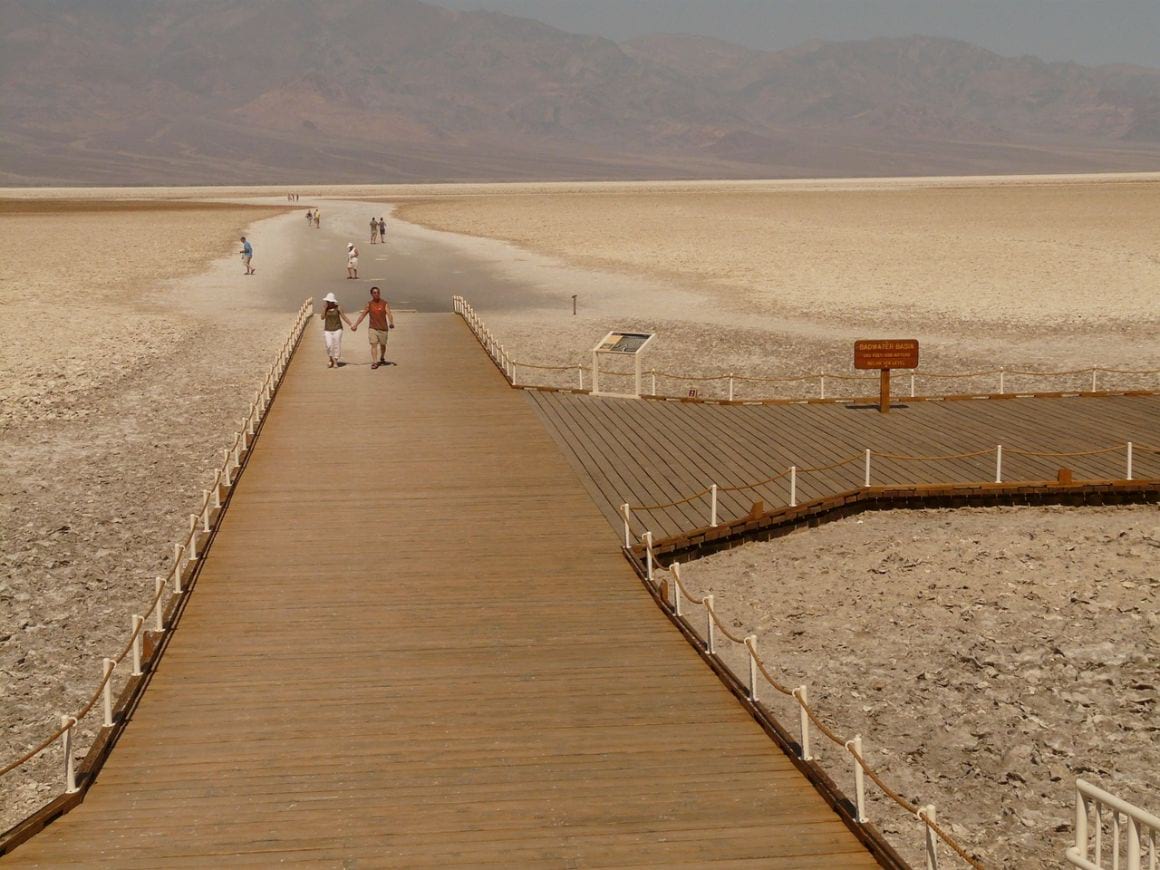
This Death Valley trail is for everyone, including weekend hikers and veterans who feel like an easygoing stroll in a beautiful landscape. It may be short, but after a while, you’ll definitely feel the heat.
Part of the appeal of the Badwater Basin Saltflats Trail is being able to say you’ve walked around in the lowest point in North America. The basin sits at 282 feet below sea level and, as this may suggest, it’s a flat area that virtually anyone can walk around with no trouble.
Why has it never filled with water? It hardly ever rains — and when it does, the water gets evaporated in a hot second.
The first part of this hike (more of a pleasant walk) takes you along boardwalks out over the polygonal patterns in the salt flats. After a while, the crowds thin a little and you’ll see some pretty amazing salt patterns.
The enormity of the place becomes real as you surround yourself with this utterly stark, lifeless environment. You can also see the highest point in Death Valley National Park, Telescope Peak, looming in the distance.
- Length: 3 km
- Duration: 1 hour
- Difficulty: Easy
- Trailhead: Badwater Road (36°13’47.9″N 116°46’05.1″W)
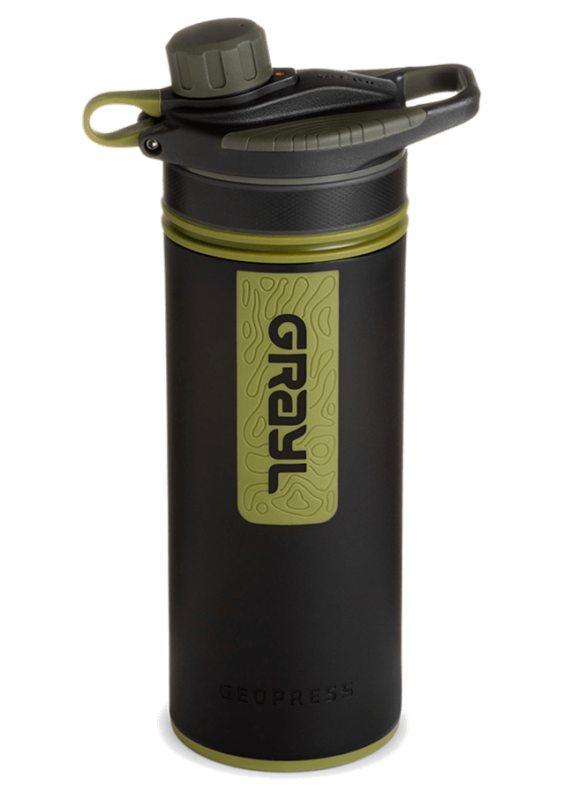
Drink water from ANYWHERE. The Grayl Geopress is the worlds leading filtered water bottle protecting you from all manner of waterborne nasties.
Single-use plastic bottles are a MASSIVE threat to marine life. Be a part of the solution and travel with a filter water bottle. Save money and the environment!
We’ve tested the Geopress rigorously from the icy heights of Pakistan to the tropical jungles of Bali, and can confirm: it’s the best water bottle you’ll ever buy!
View on REI Read the Review6. Corkscrew Peak – The Toughest Trek in Death Valley National Park
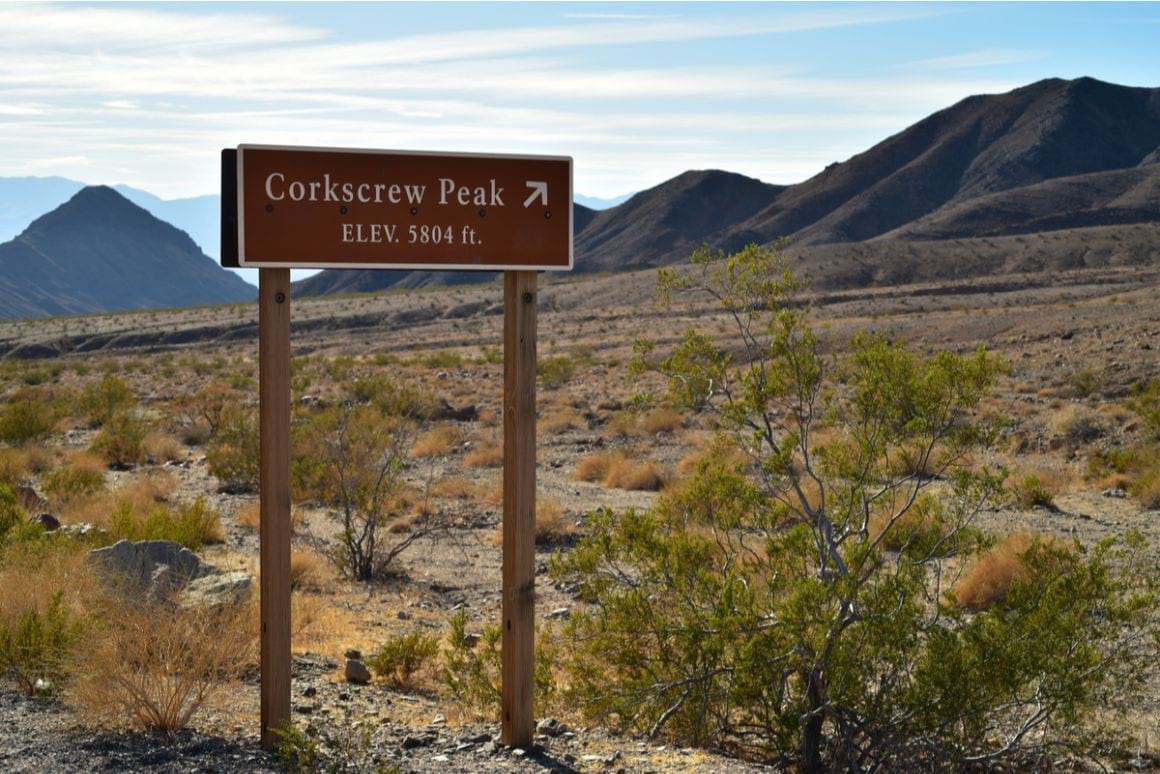
After that short and salty trail, you may find yourself yearning for more. Well, there’s definitely more strenuous hikes in Death Valley to be had, and Corkscrew Peak is right up there on the list.
Named after its vaguely corkscrew shape, obviously — this spot is part of the Grapevine Mountains. It’s a tough one, but if you’re up for the challenge, you’ll find this one pretty fun, too.
It can be pretty tricky to find the route at times, especially at the beginning. Watch out for the little piles of rocks marking the trail, and grab a map from the visitor center to help you along the way.
Entering through the canyon wash, the path begins to narrow down. After two miles, you’ll be out of the canyon and making a steady ascent towards the summit. It gets steeper and steeper from this point on.
But this hike is all about the stunning 360-degree views at the top. From its summit — 5,804 feet above sea level — you’ll get to see dunes, salt flats, and snowy peaks in the distance.
Our advice? Start early in the morning and take plenty of water.
- Length: 11.7 km
- Duration: 7 hours
- Difficulty: Hard
- Trailhead: Daylight Pass Road (36°44’04.5″N 116°58’19.5″W)
7. Gower Gulch Loop Trail – Best Hike for Views in Death Valley National Park
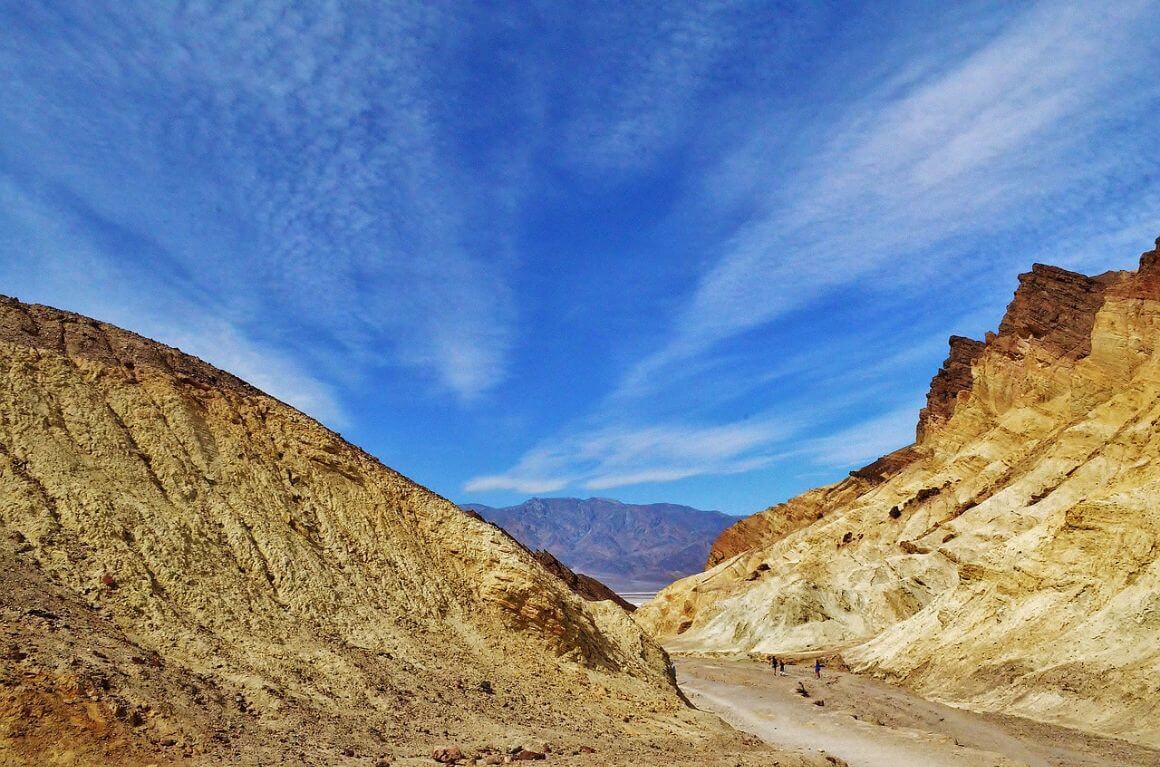
Though you can get some pretty decent views from other hikes in Death Valley, none come quite as easily as with this trail. The Gower Gulch Loop takes in some of the best scenery in the entire park!
It starts off on the Golden Canyon Trail, so you get to cross that out of the list, too. At marker 10 it veers off and you’ll soon be passing the prominence of Manly Beacon, where the spectacular views come in.
You can then descend into Gower Gulch itself, into the canyon wash and through the badland region. You’ll simply be following the route of wash, as it winds its way downhill and out of the mountains.
There’s the option to go clockwise or anticlockwise; either way is fine, and none of them is too challenging. Best done early to beat the heat.
- Length: 6.9km
- Duration: 1.5/2 Hours
- Difficulty: Average
- Trailhead: Golden Canyon Parking Area (36°25’14.5″N 116°50’48.1″W)
8. Eureka Dunes – Best Off the Beaten Path Trek in Death Valley National Park
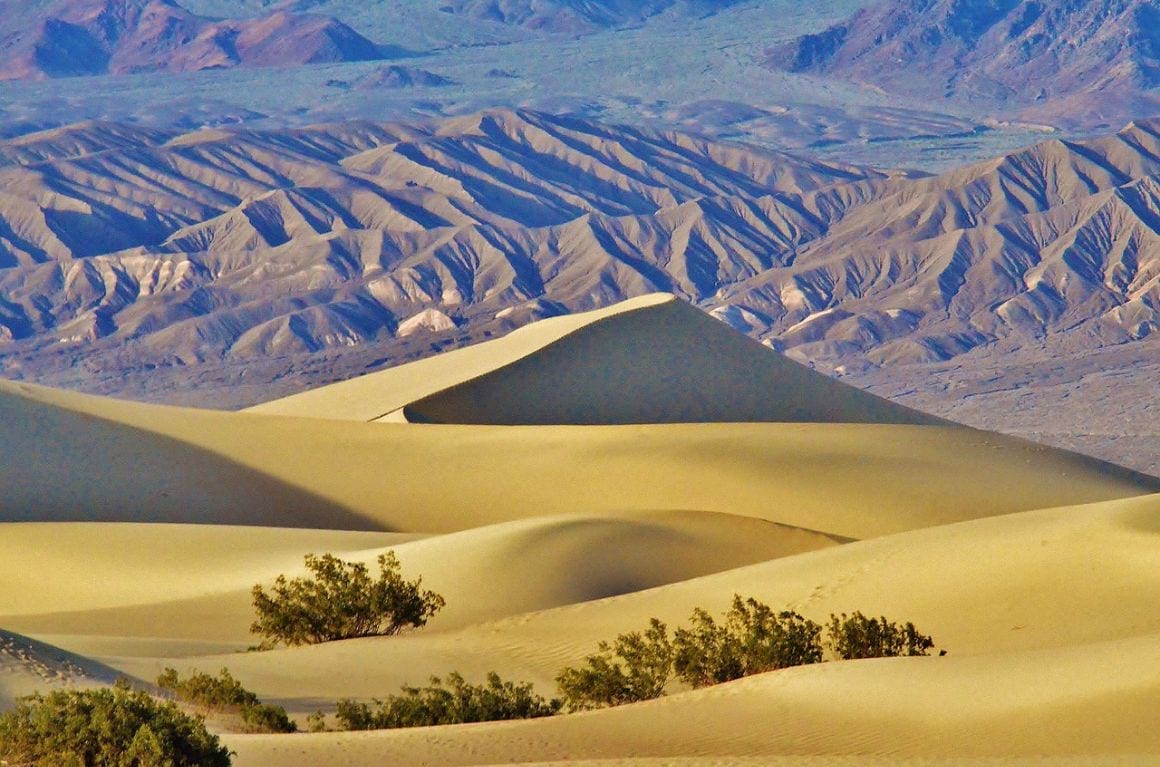
To finish off the list, here’s a Death Valley trail that few people dare tread. This is possibly the most remote hiking experience you can have in the entire park.
Located in the northwest corner of Death Valley, the Eureka Dunes are situated in the basin formed by the Eureka Valley — a bowl of dunes that are constantly shifting.
The dunescape runs for three miles and, at some points, reaches a mile in width. They’re thought to be the tallest dunes in North America, but they’re overshadowed by the Last Chance Mountains, towering over 4,000 feet above them.
Hiking here is an amazing experience, but it is not an easy feat. The landscape is constantly shifting, which means there’s never one clear path. The sand is also loose underfoot, and the dunes themselves are steep. But for those who like adventure, press on to the top.
If the conditions of the soil are just right, you’ll be able to hear the sand sing from the summit of any one of the dunes. People’s descriptions of this range from a bass note on a pipe organ to the hum of a propeller plane.
It’s estimated that the dunes have existed for around 10,000 years. Their isolated nature also means there are a few endemic species here, including the Eureka Evening Primrose five species of beetle!
- Length: 5.5 km
- Duration: 2 hours
- Difficulty: Moderate
- Trailhead: Eureka Valley Road (37°06’43.3″N 117°40’53.7″W)
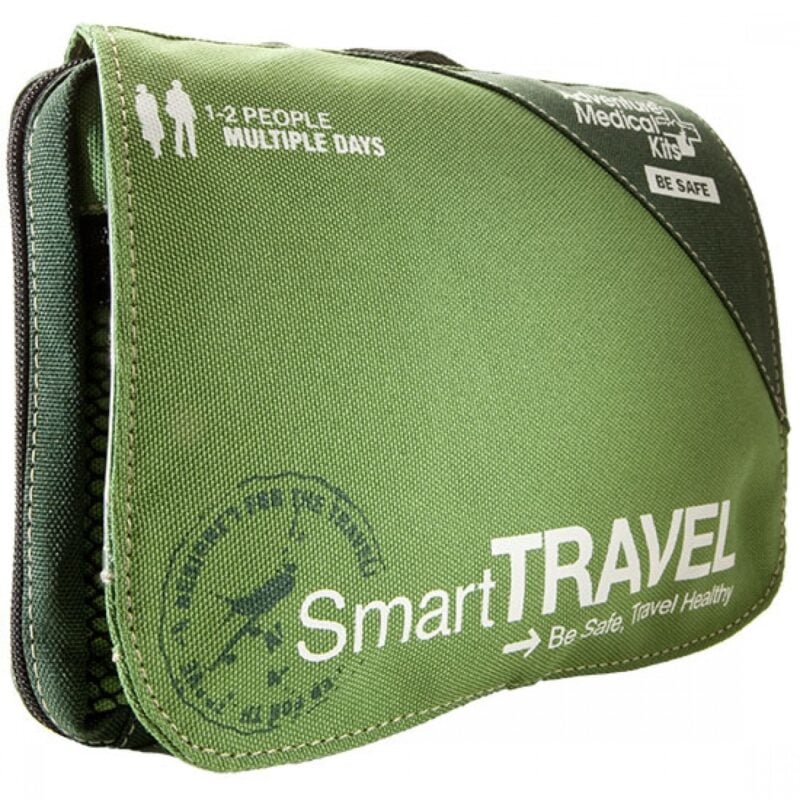
Things go wrong on the road ALL THE TIME. Be prepared for what life throws at you.
Buy an AMK Travel Medical Kit before you head out on your next adventure – don’t be daft!
Buy on REINow that you’re clued up on all the sexy hikes and how to go about them, there’s one crucial element left: figuring out where to stay in Death Valley.
Let’s start with the most convenient option — a hotel in the park itself. While hotels, lodges, and motels aren’t exactly rampant in this remote desert region, there are a fair few to choose from.
Closest to actual Death Valley, there’s Stovepipe Wells Village. This has a hotel and a campground for overnight visitors to the park. Also nearby is Furnace Creek, with a couple of lodges you could stay at.
Not too far away, you also have the town of Beatty, Nevada. There are a few inns, motels, and hotels as well here. Nothing too fancy, but it’ll do the job.
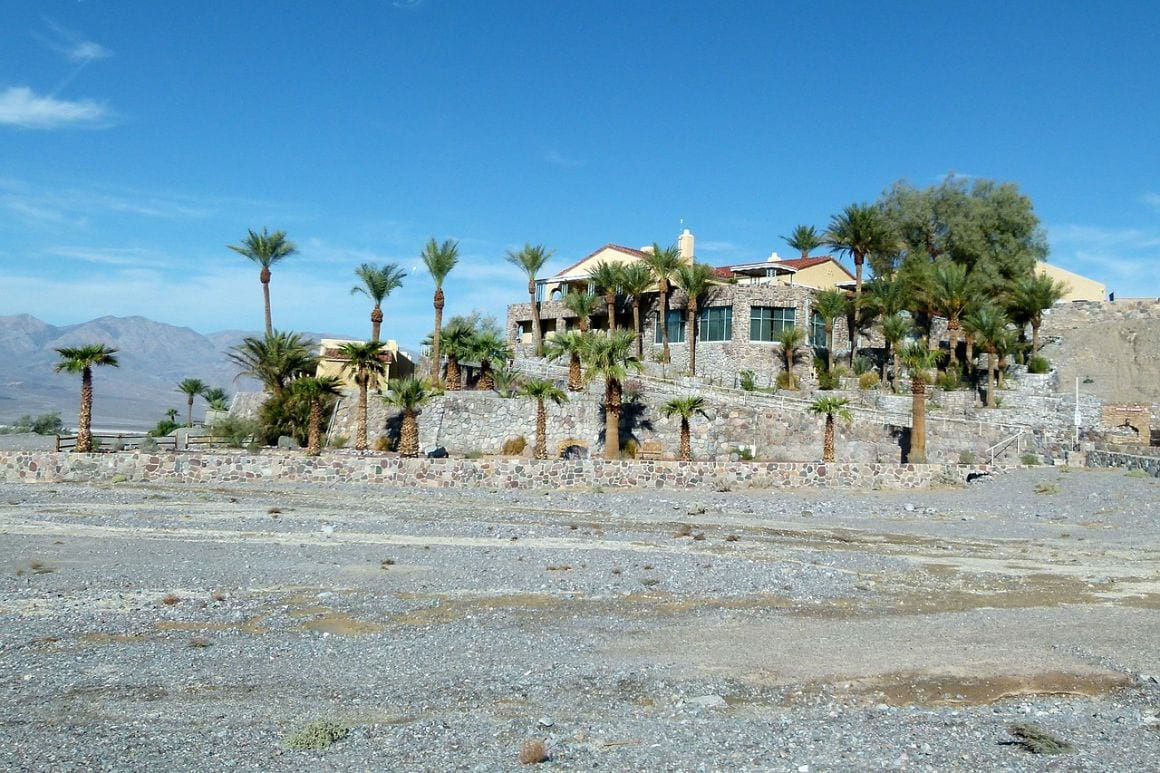
If you’re looking for a bigger city, you can opt for Vegas. Staying in Las Vegas is a great way to kill two birds with one stone. It’s only a two-hour drive to Death Valley, but you’ll have to be up extra early to avoid the heat in the park.
Camping in Death Valley is also an option if that’s your thing. You can camp for free at Emigrant, Mahogany Flats Campground, Thorndike Campground, and Wildrose Campground. Wild camping is possible in certain areas.
Best Airbnb in Death Valley: Beautiful Cultural Home
If this is your first time staying in Death Valley, then you have to stay here! It’s right in between DV and Las Vegas, so you’re close to both nature and city life. The patio comes equipped with a rocking chair for killer sunsets.
Best Hostel near Death Valley: Sin City Hostel
Located at the heart of Las Vegas, this hostel is within walking distance of the Strip, downtown, and the city’s most famous clubs and casinos. It has comfortable beds, a large common room, hot showers, and washing machines. This is our recommendation for the best hostel near Death Valley.
Best Hotel near Death Valley: Hampton Inn & Suites Ridgecrest
A great location and good-sized beds are what make this our pick for the best hotel near Death Valley. Located in Ridgecrest, this hotel is ideally set for exploring the city and the area’s most famous tourist attractions. This hotel boasts an awesome swimming pool as well as a relaxing Jacuzzi.
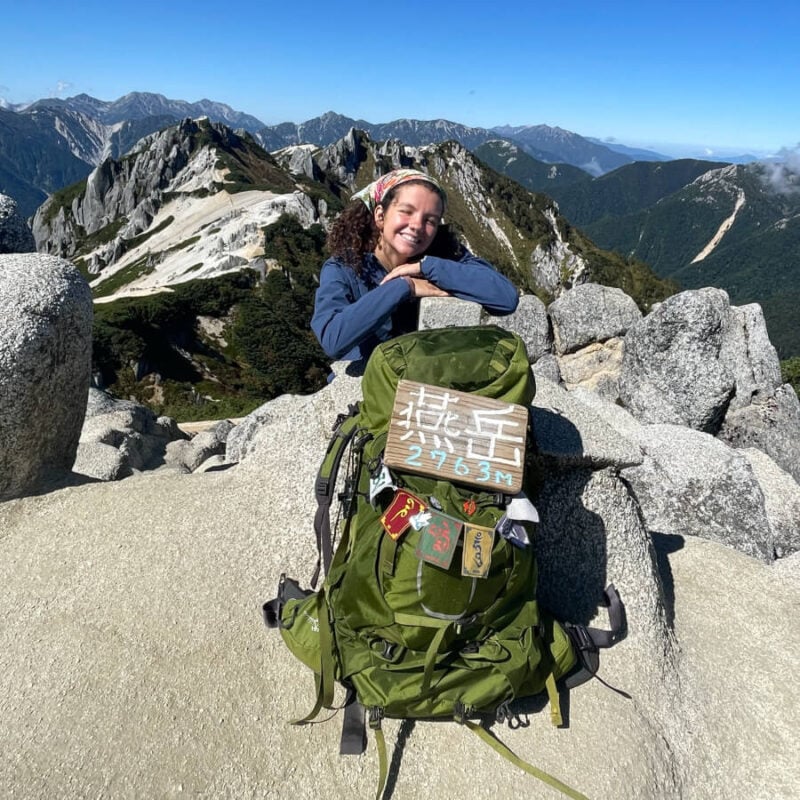
We’ve tested countless backpacks over the years, but there’s one that has always been the best and remains the best buy for adventurers: the broke backpacker-approved Osprey Aether and Ariel series.
Want more deetz on why these packs are so damn perfect? Then read our comprehensive review for the inside scoop!
View on OspreyAlright, how are you going to prepare for the hikes in Death Valley?
This unusual and unforgiving landscape hides a multitude of treasures that are just waiting to be discovered. But before you let loose on a hike, you might want to know what you should pack in your bag.
Depending on the type of hike you’re planning, your kit is going to look a little different. But for both easy hikes and the longest of treks, some much-needed essentials are called for.
Get yourself a solid pair of walking shoes that are up to the challenge of this magnificent park. Make sure they fit well and have a good grip — some of those canyons have some pretty slippy sides!
And although this is a hot and sweaty kind of a place, you need layers. At higher altitudes, you can easily throw on a jacket when the temperature drops. Even in the hotter parts of the park, you can stay cool and breezy by covering up in loose-fitting clothes; lighter colors will also help.
Protect yourself from the sun’s harmful rays and make sure to bring a filter water bottle too. You can easily filter water from any source that way.
Last but not least: a first aid kit! These are often overlooked, but can be a lifesaver in case something bad happens.
Here’s a handy list to make it all simple:
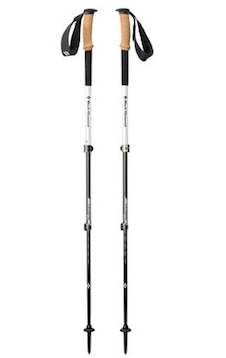
Black Diamond Alpine Carbon Cork
- Price > $$$
- Weight > 17 oz.
- Grip > Cork
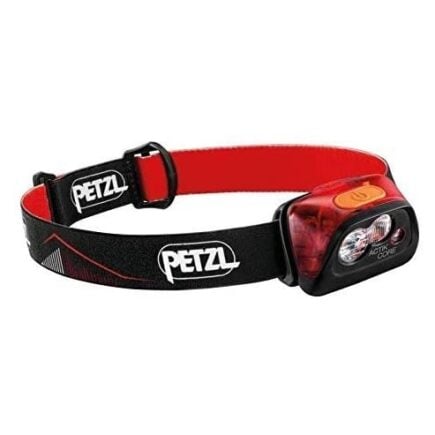
Petzl Actik Core Headlamp
- Price > $$
- Weight > 1.9 oz
- Lumens > 160
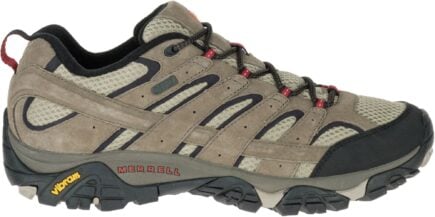
Merrell Moab 2 WP Low
- Price > $$
- Weight > 2 lbs 1 oz
- Waterproof > Yes
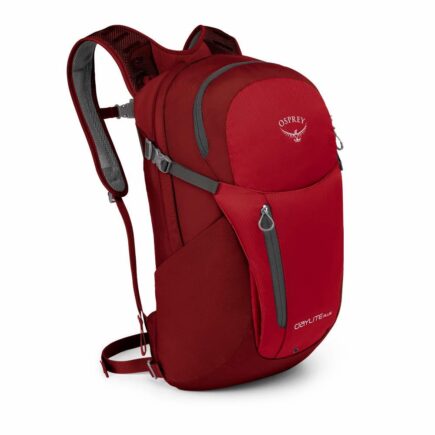
Osprey Daylite Plus
- Price > $$$
- Weight > 20 oz
- Capacity > 20L
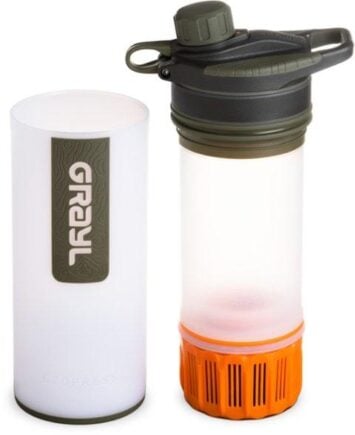
GRAYL Geopress
- Price > $$$
- Weight > 16 oz
- Size > 24 oz
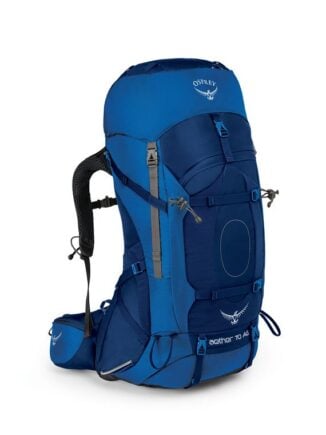
Osprey Aether AG70
- Price > $$$
- Weight > 5 lbs 3 oz
- Capacity > 70L
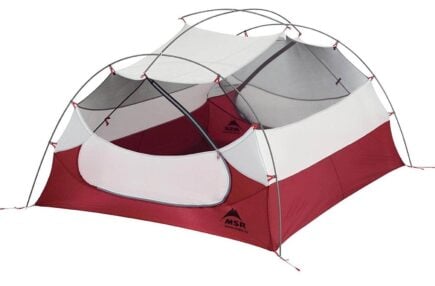
MSR Hubba Hubba NX 2P
- Price > $$$$
- Weight > 3.7 lbs
- Capacity > 2 person
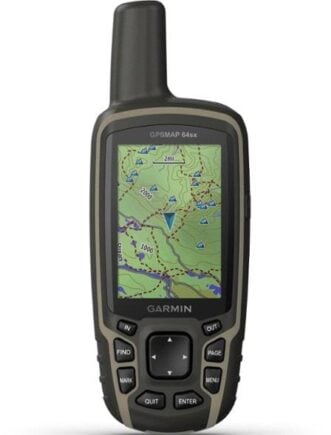
Garmin GPSMAP 64sx Handheld GPS
- Price > $$
- Weight > 8.1 oz
- Battery Life > 16 hours
Don’t Forget Your Death Valley Travel Insurance
ALWAYS sort out your backpacker insurance before your trip. There’s plenty to choose from in that department, but a good place to start is Safety Wing.
They offer month-to-month payments, no lock-in contracts, and require absolutely no itineraries: that’s the exact kind of insurance long-term travellers and digital nomads need.
SafetyWing is cheap, easy, and admin-free: just sign up lickety-split so you can get back to it!
Click the button below to learn more about SafetyWing’s setup or read our insider review for the full tasty scoop.
Buy Us a Coffee!
A couple of you lovely readers suggested we set up a tip jar for direct support as an alternative to booking through our links, since we’ve decided to keep the site ad-free. So here it is!
You can now buy The Broke Backpacker a coffee. If you like and use our content to plan your trips, it’s a much appreciated way to show appreciation 🙂










